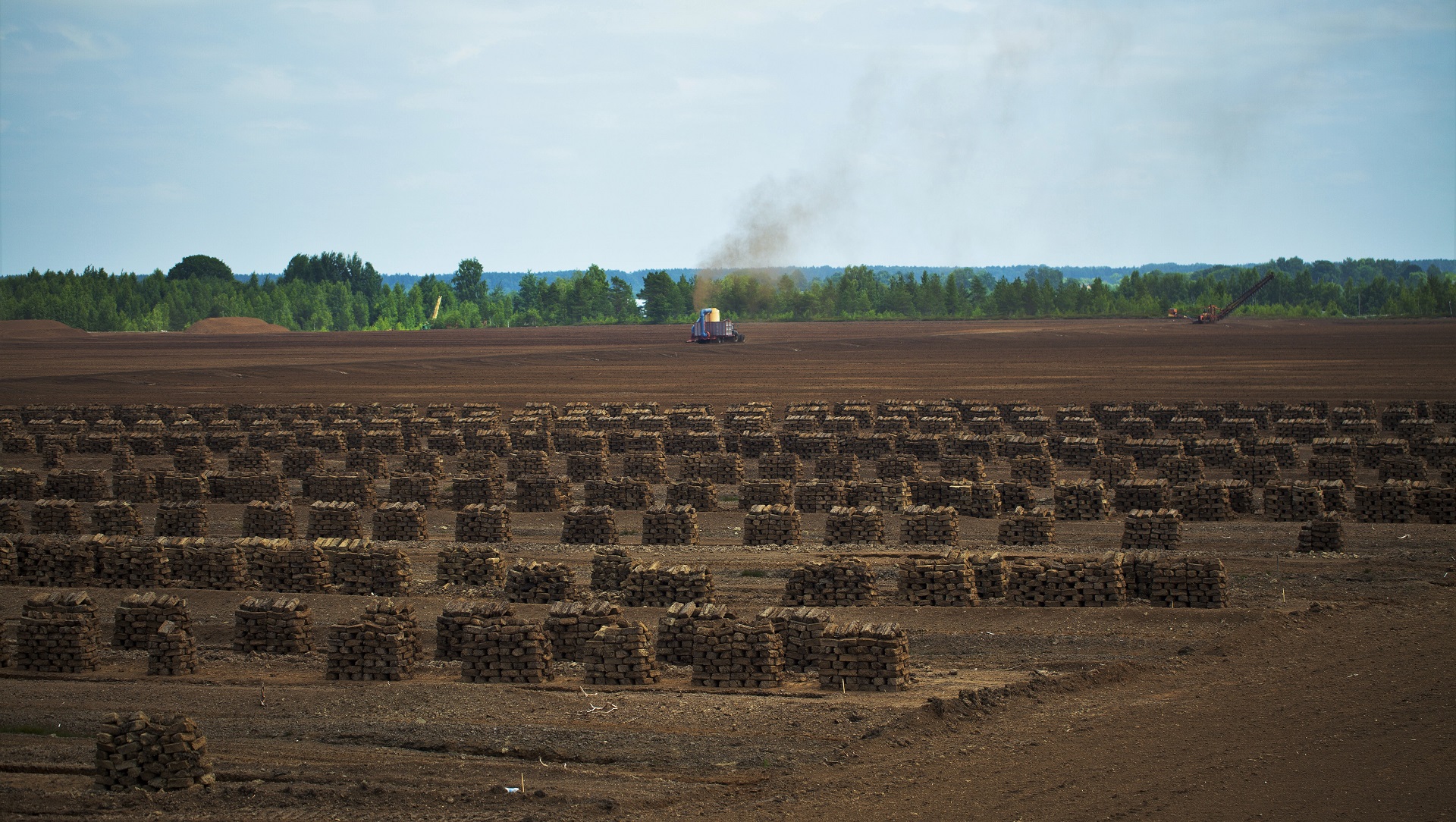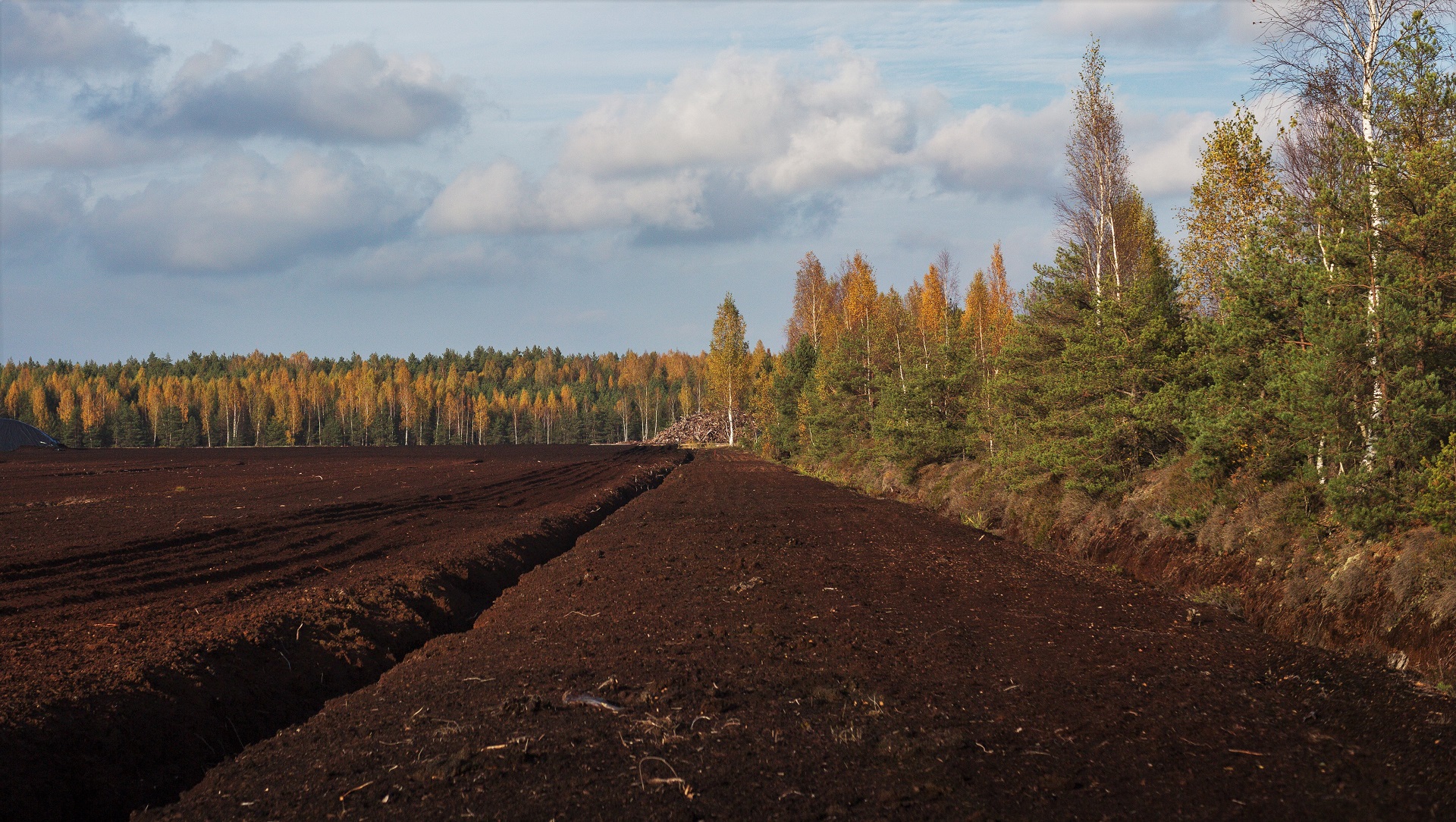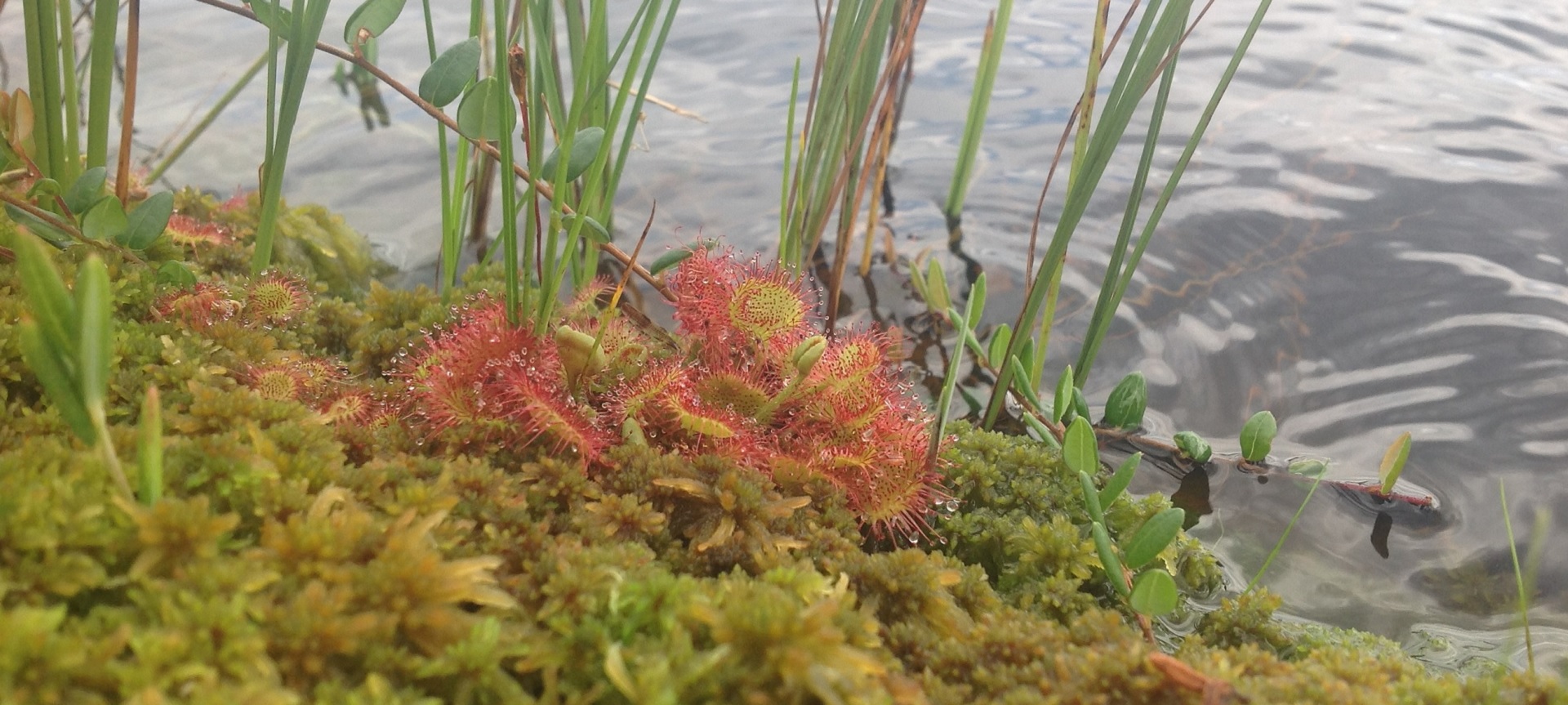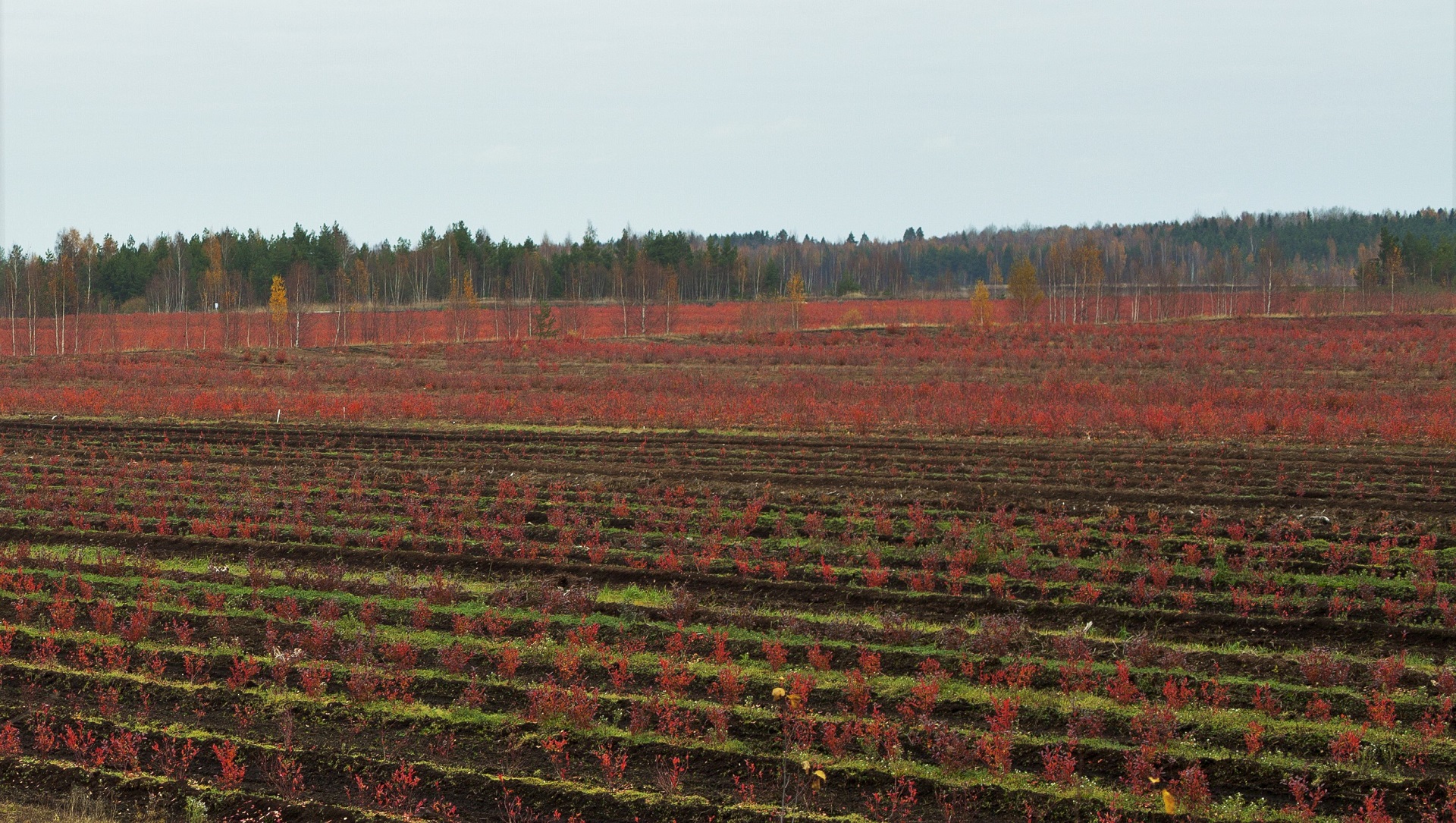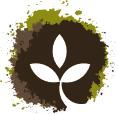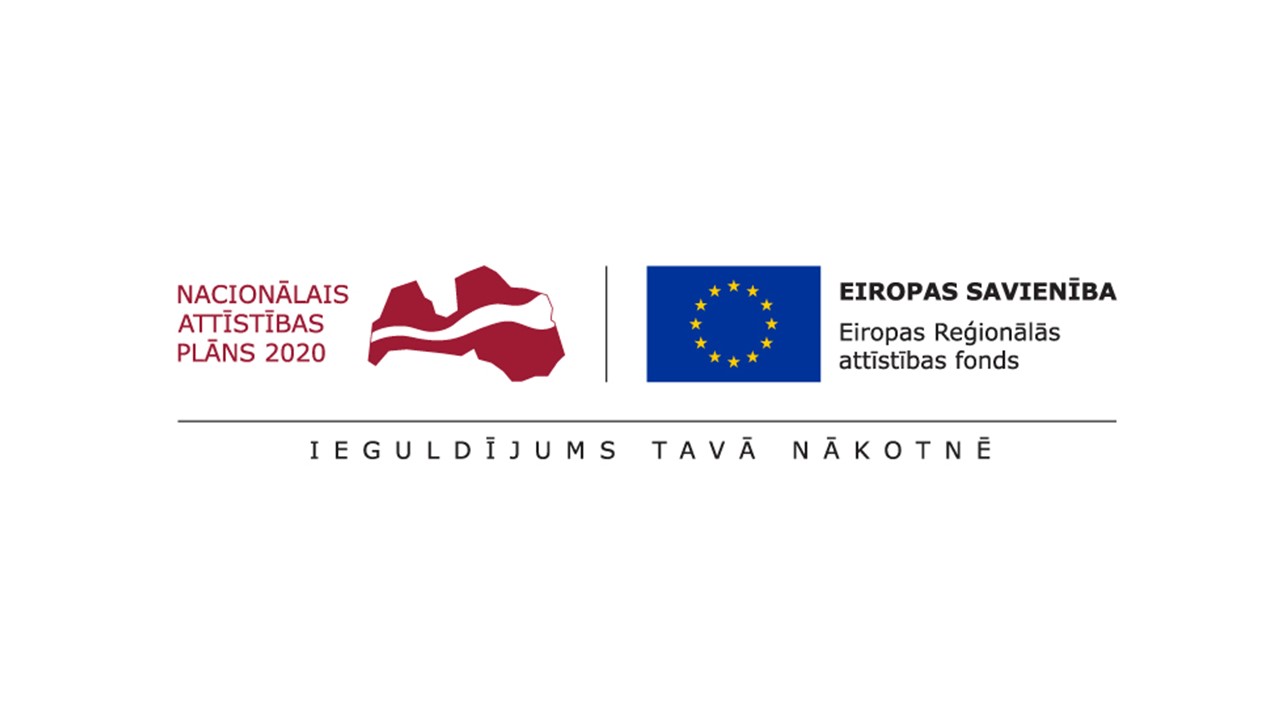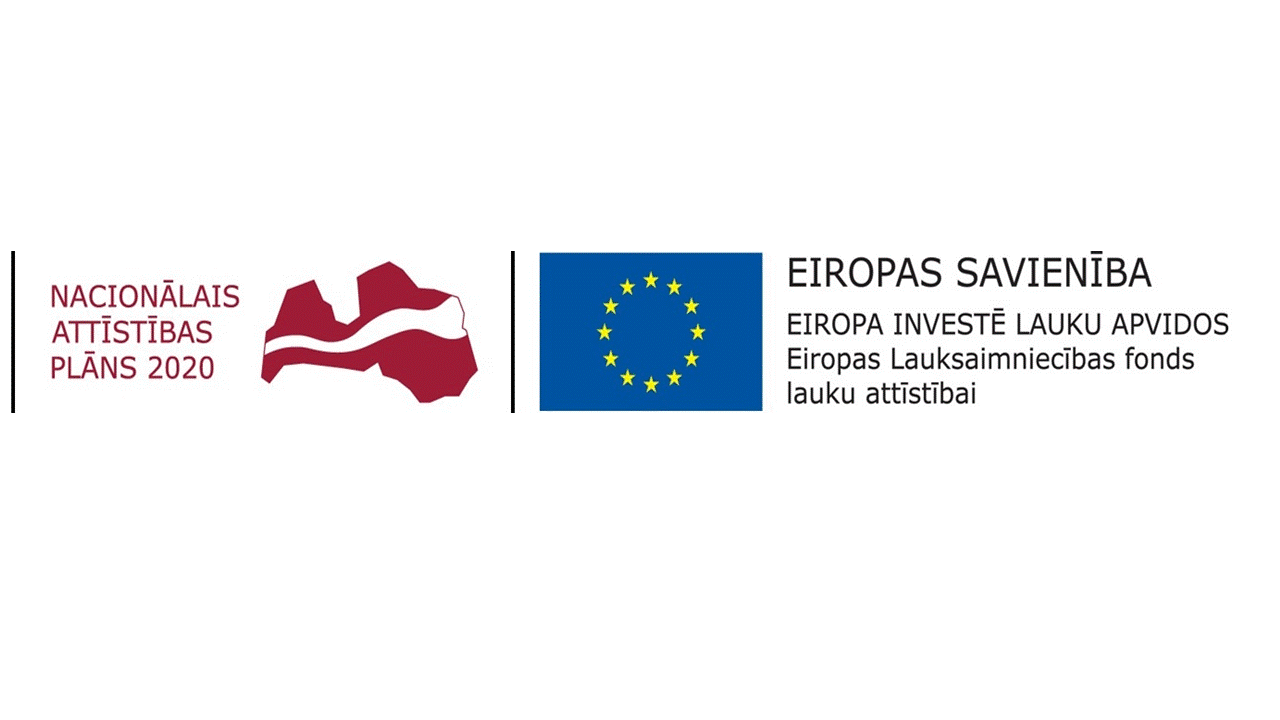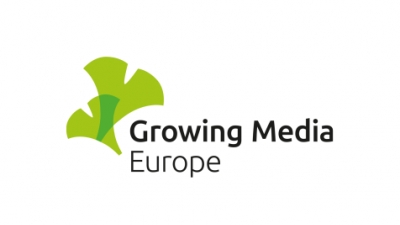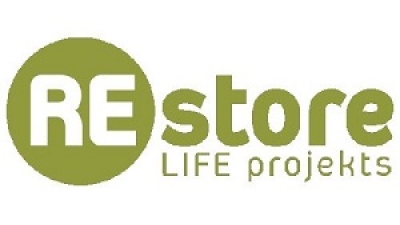Peat
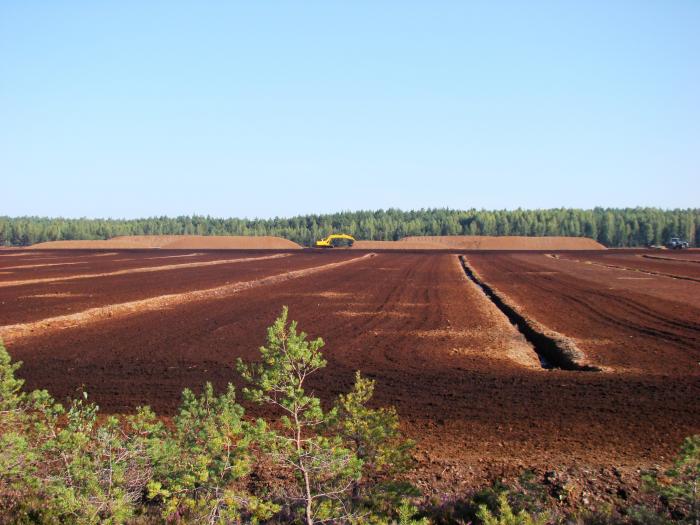
Peat is an organic sedimentary rock that contains not more than 50% of minerals and that are formed in high humidity and oxygen deficiency conditions, by decomposition of plant biomass. The natural humidity of peat is 86-96%. Amount of the peat that accumulates in the bog depends on the annual growth and decomposition conditions of peat-forming plants. Peat layer growth is assessed from 0.6 to 4 mm per year. Usually this increase is larger in the raised bogs. Particularly high growth of peat layer – 4 mm per year has been observed in the biggest Latvian bog - Teiču Bog.
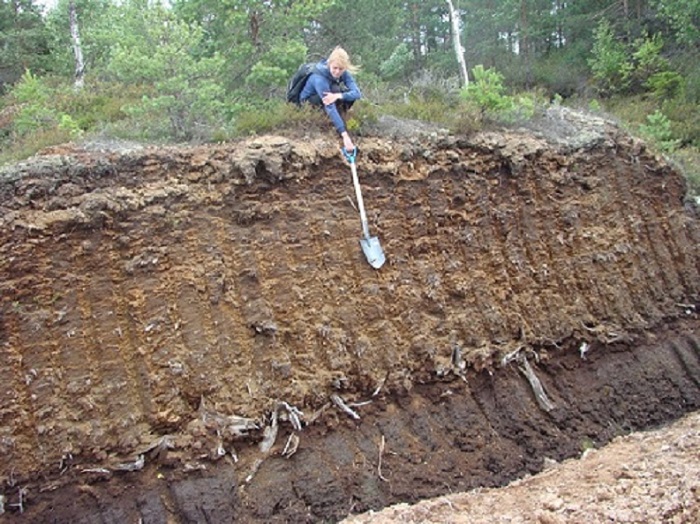
White peat – raised type or moss peat consisting mainly of various types of sphagnum, cotton-grass, scheuchzerias, and wood pieces. Poorly decomposed, acidic. Natural, neutral plant substratum with good porosity and water absorption capability. Also, it can be used as thermal insulation material, in floristics, in textile production and as a pollution absorber.
Dark peat – low type peat or grass peat that consists of different kinds of caulescent plants, reeds, horse-tails, etc. Well decomposed. Suitable for heating, also for substratum, humus extracts, cosmetics, activated carbon production. The picture clearly displays, which is the dark and the white peat.

